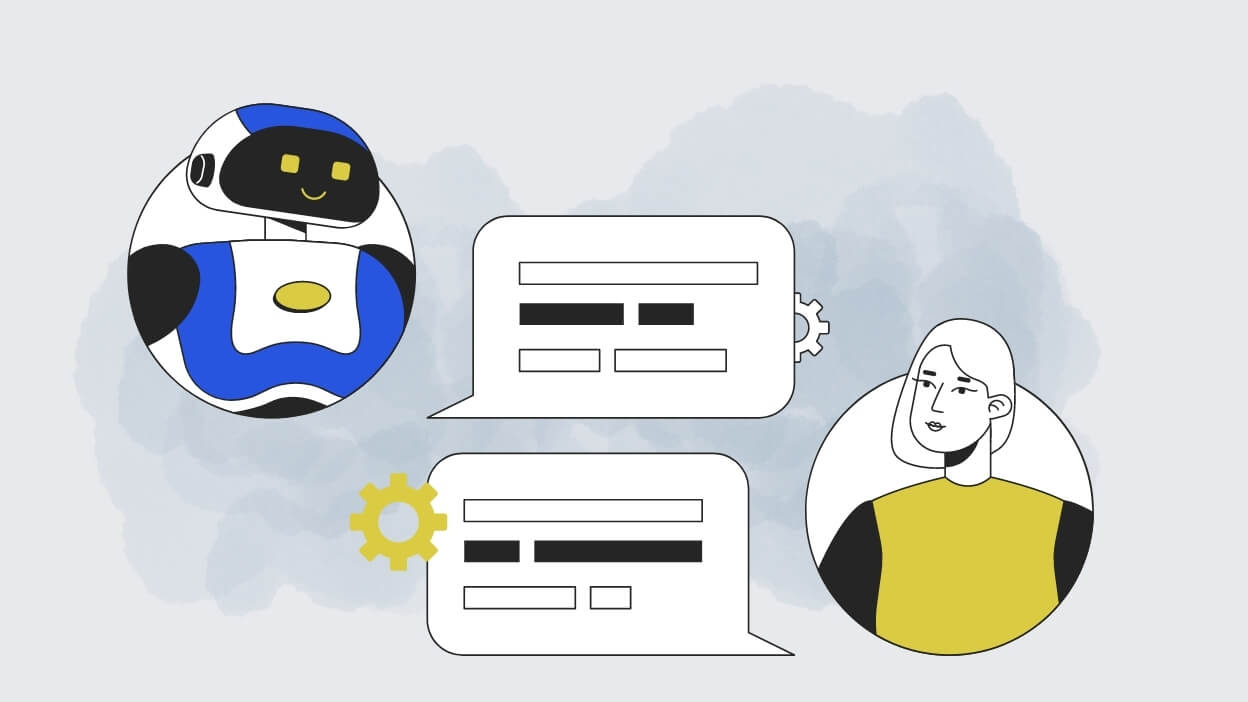
Introduction
You must have heard these two terms buzzing around quite frequently, "chatbot" and "conversational AI." While they might seem interchangeable at first glance, they represent different facets of artificial intelligence and how they interact with us. Understanding the distinction between them is not just a matter of semantics; it's about grasping the depth and potential of modern AI and leveraging its benefits into your business.
Chatbots, at their core, are software applications designed to mimic human conversation. The basic function of a chatbot is to facilitate interaction between humans and machines, often to answer questions, provide information, or assist in completing tasks.
Whereas, Conversational AI refers to a more advanced form of technology. Conversational AI encompasses not just chatbots, but also more sophisticated systems that use Natural Language Processing (NLP), Machine Learning (ML), and other AI components to understand, interpret, and respond to human language in a more natural and human-like way. Unlike basic chatbots, conversational AI can handle unstructured conversations, understand nuances, and learn from interactions to improve over time. This makes them more adaptable and capable of handling complex tasks or providing personalized responses.
Recognizing the distinction between chatbots and conversational AI is crucial for businesses and developers in making informed decisions about implementing AI solutions. For businesses, it's about choosing the right tool for customer engagement, support, and digital interaction. For developers and AI enthusiasts, it's about understanding the current capabilities of AI and the potential for future developments. This knowledge guides investment, development, and the strategic use of AI technologies in various sectors.
So in a nutshell, while all conversational AIs can be considered chatbots, not all chatbots qualify as conversational AI.
What is a Chatbot
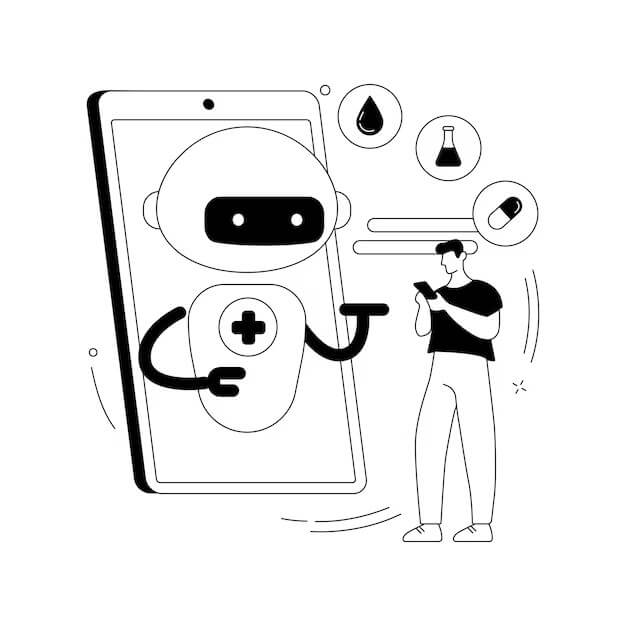
Chatbots are software applications designed to simulate conversations with human users. Chatbots are typically rule-based, meaning they respond to specific commands or phrases with pre-programmed responses. They are often found in customer service scenarios, where they handle routine inquiries or guide users through a set of predefined options. The key characteristic of chatbots is their reliance on a set of predetermined rules or decision trees. They cannot understand context or intent beyond their programmed capabilities.
Types of Chatbots:
- Scripted or Rule-Based Chatbots: These are the most basic of chatbots. They operate on predefined rules and scripts. Users interact with them through a set of predetermined options, and the chatbot responds based on its programming. They're straightforward but limited in flexibility.
- Intelligent or AI-Powered Chatbots: These use artificial intelligence, particularly natural language processing (NLP) and machine learning, to understand and respond to user queries. They learn from interactions and improve over time, offering more personalized and context-aware responses.
- Transactional Chatbots: These are designed to help users complete specific tasks or transactions, like booking tickets or ordering food. They often integrate with various databases and backend services to execute these tasks. Domino's Pizza has a chatbot for ordering pizza directly through Facebook Messenger, simplifying the ordering process.
- Conversational Agents: These are advanced versions of AI chatbots designed to engage in more human-like, ongoing conversations with users. They are often used for more complex customer service tasks and can handle a wide range of queries. OpenAI's GPT-3.5, which powers various conversational agents, can engage in detailed and contextually rich conversations across various domains.
- Customer Service Chatbots: Specifically designed for handling customer service tasks, these chatbots can answer queries, provide support, and even escalate issues to human representatives if needed. Bodt's chatbot helps businesses provide quick answers to customer support questions, using AI to understand and respond to customer queries.
- Voice-Enabled Chatbots: These chatbots use voice recognition technology to interact with users. They are increasingly popular in home assistant devices and smartphones.
What is a Conversational AI
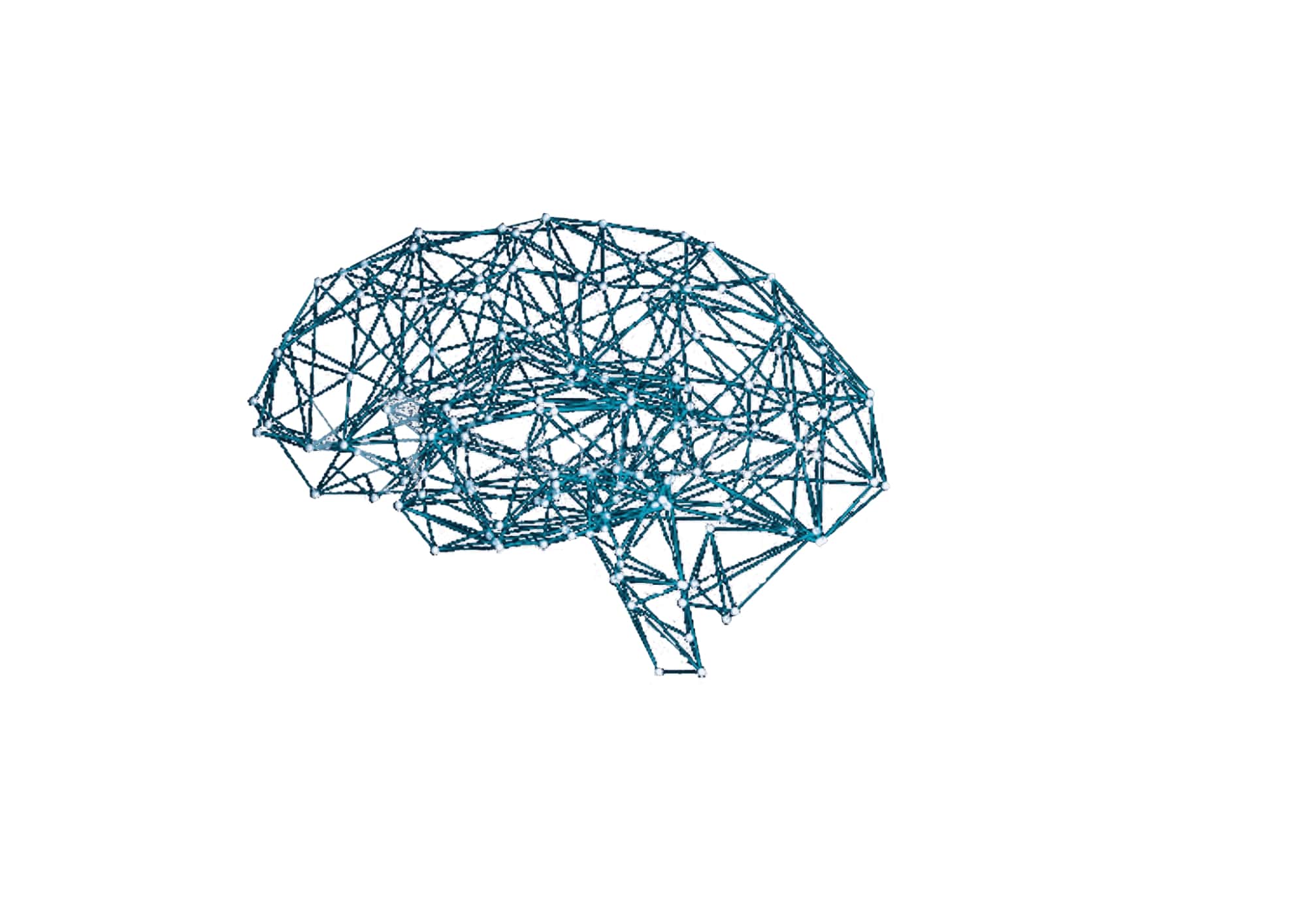
Conversational AI is a fascinating and rapidly evolving field that sits at the intersection of human communication and artificial intelligence. It's like having a conversation with a machine that understands and responds in a way that feels almost human. This technology goes beyond the basic, scripted responses of traditional chatbots and delves into the realm of understanding nuances, context, and even emotions in human language.
Basic Functions of Conversational AI:
- Understanding Human Language: Unlike traditional chatbots that rely on specific keywords or phrases, conversational AI uses Natural Language Processing (NLP) to comprehend the intent behind what a person says, even if the phrasing varies.
- Engaging in Dialogue: It can maintain a coherent and context-aware conversation, remembering past interactions and using this information to make the conversation flow naturally.
- Learning and Adapting: Through Machine Learning (ML), conversational AI learns from each interaction, constantly improving its responses and understanding.
How It Differs from Traditional Chatbots:
Imagine a chatbot as a script-following actor, while conversational AI is more like an improv artist. Traditional chatbots follow predefined rules and paths, offering limited and often rigid interactions. Conversational AI, however, can improvise, understand varied expressions, and provide personalized responses, making interactions more engaging and effective.
Core Technologies Behind Conversational AI:
- Natural Language Processing (NLP): This is the brain of conversational AI, enabling it to understand and process human language.
- Machine Learning and Deep Learning: These technologies allow the AI to learn from data, recognize patterns, and make decisions based on past interactions.
- Speech Recognition: For voice-based systems, this technology converts spoken words into text that the AI can understand.
The applications of Conversational AI are limitless, be it for personal use or professional use:
- Customer Service Bots: These AI systems can handle customer inquiries, provide product recommendations, and even resolve complex issues, all with a conversational touch.
- Personal Assistants: Think of Siri, Alexa, or Google Assistant – they help with tasks like setting reminders, answering questions, and controlling smart home devices, all through natural language commands.
- Mental Health Support: Conversational AI can offer preliminary mental health support, providing a safe, judgment-free space for individuals to express their feelings. These AI systems can recognize signs of distress or mental health issues and guide users to appropriate resources or professional help.
- Healthcare Bots: These can assist in symptom checking, provide health advice, and even offer mental health support through therapeutic conversations.
- E-commerce and Retail: AI chatbots in e-commerce sites can assist customers in finding products, making recommendations based on past purchases, and answering queries about shipping, returns, and product details. This enhances the shopping experience, making it more interactive and personalized.
- Entertainment and Media: Conversational AI can act as personal entertainment assistants, recommending movies, music, or TV shows based on user preferences. They can even engage in discussions about plot theories, and character development, or provide trivia about your favorite shows. Smart Home Integration: These AI systems can control smart home devices, adjusting lighting, temperature, and security settings through simple voice commands, creating a more connected and intuitive home environment.
Key Differences Between Chatbots and Conversational AI
For those who are still a little bit confused about the difference between Chatbots and Conversational AI, we are going to discuss them under 4 broad sub-heads namely Functionality and Capabilities, Interaction Quality, Learning and Adaptation, and finally User Experience and Engagement.
- Functionality and Capabilities:
Chatbots: They operate based on a set of predefined rules and scripts. Their functionality is limited to the scenarios they are programmed for. They can handle basic queries and tasks, such as answering frequently asked questions or guiding users through a fixed process.
Conversational AI: These systems are equipped with advanced functionalities like understanding context, managing complex conversations, and handling a wide range of queries. They are not limited to predefined scripts and can engage in more sophisticated tasks, such as personalized recommendations or problem-solving.
- Interaction Quality: Scripted Responses vs. Dynamic Conversations:
Chatbots: Their interactions are typically linear and script-based. They respond to specific commands or keywords and are unable to deviate from their programmed paths. This often leads to a robotic and sometimes frustrating user experience if the user's query doesn't match the script.
Conversational AI: These systems provide dynamic, context-aware conversations. They use Natural Language Processing (NLP) to understand the intent behind a user's words, allowing for more natural and fluid interactions. This leads to a more human-like conversation, improving user satisfaction.
- Learning and Adaptation: Static Algorithms vs. AI Learning:
Chatbots: They generally do not learn from interactions. Their responses and capabilities remain static unless manually updated or reprogrammed.
Conversational AI: Powered by Machine Learning (ML) and sometimes Deep Learning, these systems learn and adapt from each interaction. They improve over time, becoming more efficient in understanding and responding to user needs.
- User Experience and Engagement:
Chatbots: The user experience can be limited and sometimes frustrating, especially if the chatbot is unable to understand or respond adequately to unscripted queries. The engagement is typically transactional.
Conversational AI: They offer a more engaging and satisfying user experience. By understanding context and user preferences, they can provide personalized interactions, making users feel more understood and valued. This leads to higher engagement and often a more meaningful connection with the user.
While chatbots are more like basic, script-following automatons, conversational AI represents a more advanced, intuitive, and adaptive form of interaction.
Use Cases and Applications
Chatbots and conversational AI have found their way into various industries, each serving unique purposes and enhancing user experiences in different ways.
Use Cases for Chatbots:
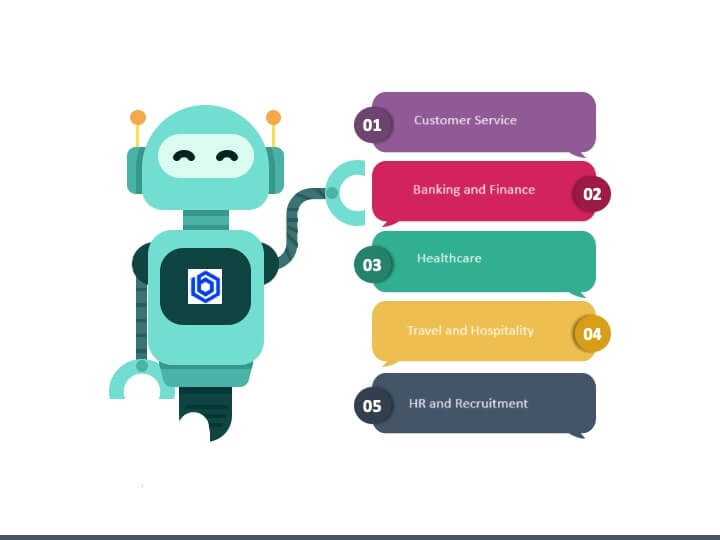
- Customer Service: In retail and e-commerce, chatbots handle basic customer inquiries, track orders, and provide information on products and services.
- Banking and Finance: Chatbots assist customers with account inquiries, balance checks, and simple transactions like money transfers.
- Healthcare: They offer appointment scheduling, and medication reminders, and provide general health and wellness tips.
- Travel and Hospitality: Chatbots help in booking tickets, providing flight information, and answering FAQs about travel policies and accommodations.
- HR and Recruitment: They assist in the initial stages of recruitment by collecting applicant information and answering FAQs about job positions.
Advanced Applications of Conversational AI:
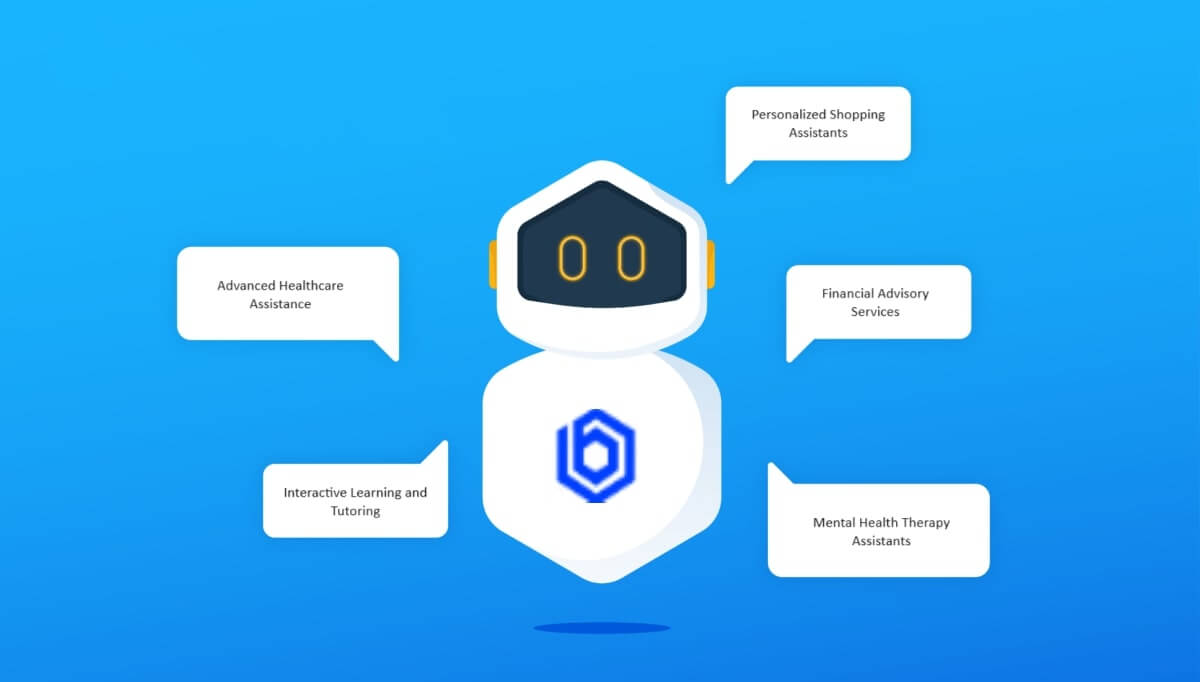
- Personalized Shopping Assistants: In retail, conversational AI can recommend products based on customer preferences, past purchases, and browsing history, offering a highly personalized shopping experience.
- Advanced Healthcare Assistance: Beyond scheduling, they can conduct preliminary medical assessments based on symptoms described by patients, guiding them to appropriate care.
- Financial Advisory Services: In banking, conversational AI can provide personalized financial advice, analyze spending patterns, and offer investment recommendations.
Interactive Learning and Tutoring: In education, they can adapt to a student's learning style, provide customized tutoring, and assist in language learning through interactive conversations. Mental Health Therapy Assistants: They can offer therapeutic conversations, track mood and mental health progress, and provide coping strategies, complementing traditional therapy sessions.
Benefits and Limitations
The integration of chatbots and conversational AI into digital strategies offers a range of benefits but also presents certain limitations and challenges.
Benefits of Using Chatbots:
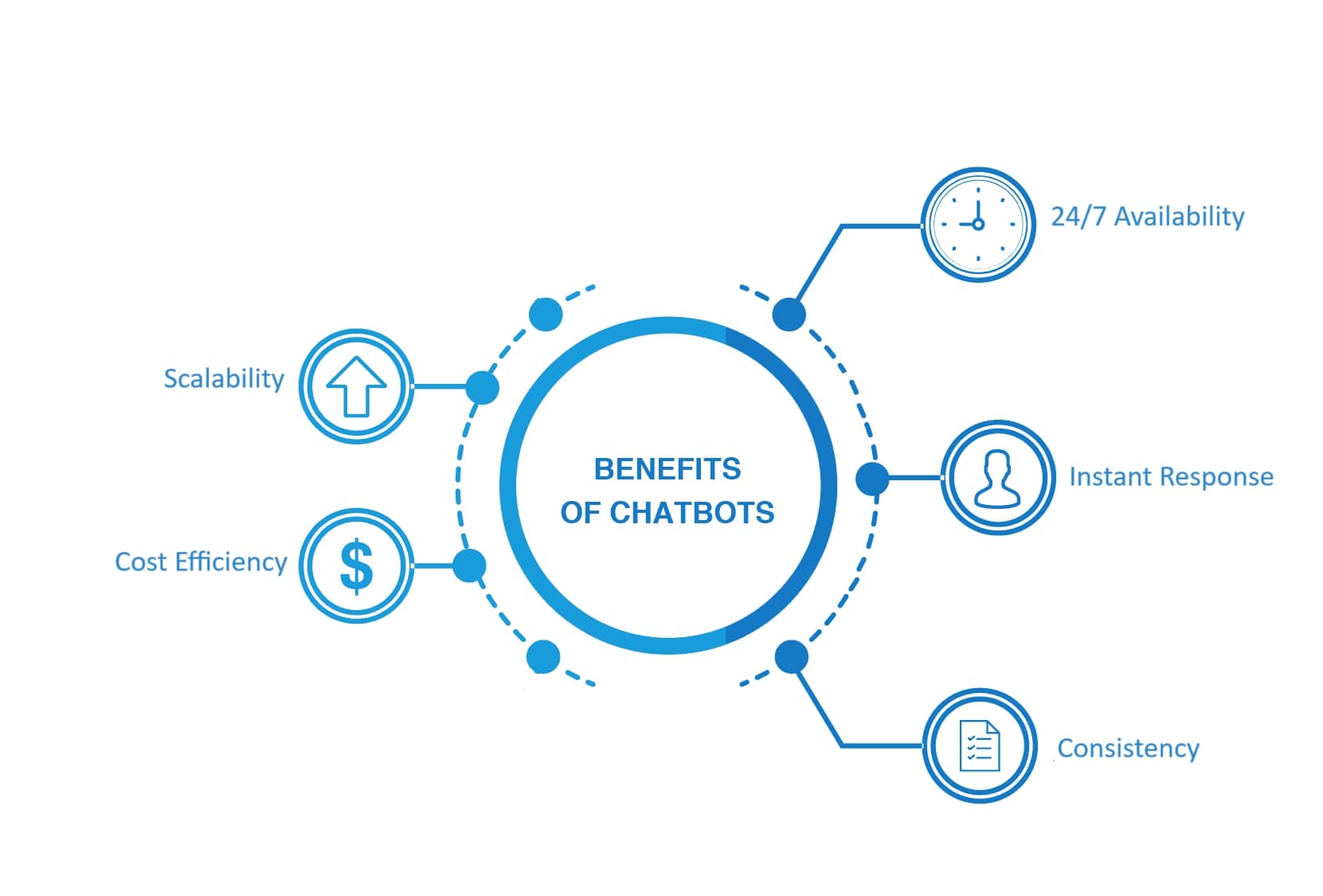
- 24/7 Availability: Chatbots can provide round-the-clock assistance, ensuring customers have access to support anytime.
- Scalability: They can handle a large volume of queries simultaneously, making them highly scalable and efficient.
- Instant Response: They provide immediate answers to user queries, enhancing customer satisfaction through quick service.
- Cost Efficiency: By automating routine tasks, chatbots can significantly reduce operational costs and the need for human customer service agents.
- Consistency: Chatbots offer consistent responses to customer inquiries, ensuring reliable information is provided every time.
Limitations and Challenges:
- Limited Understanding: Traditional chatbots struggle with understanding nuances and context, leading to frustration when they can't process user requests outside their programmed scripts.
- Rigid Interaction: The lack of flexibility in responses can make interactions feel impersonal and robotic.
- Dependency on Scripting: They require extensive scripting for different scenarios, which can be time-consuming and may not cover every possible user query.
Benefits of Conversational AI Over Traditional Chatbots:
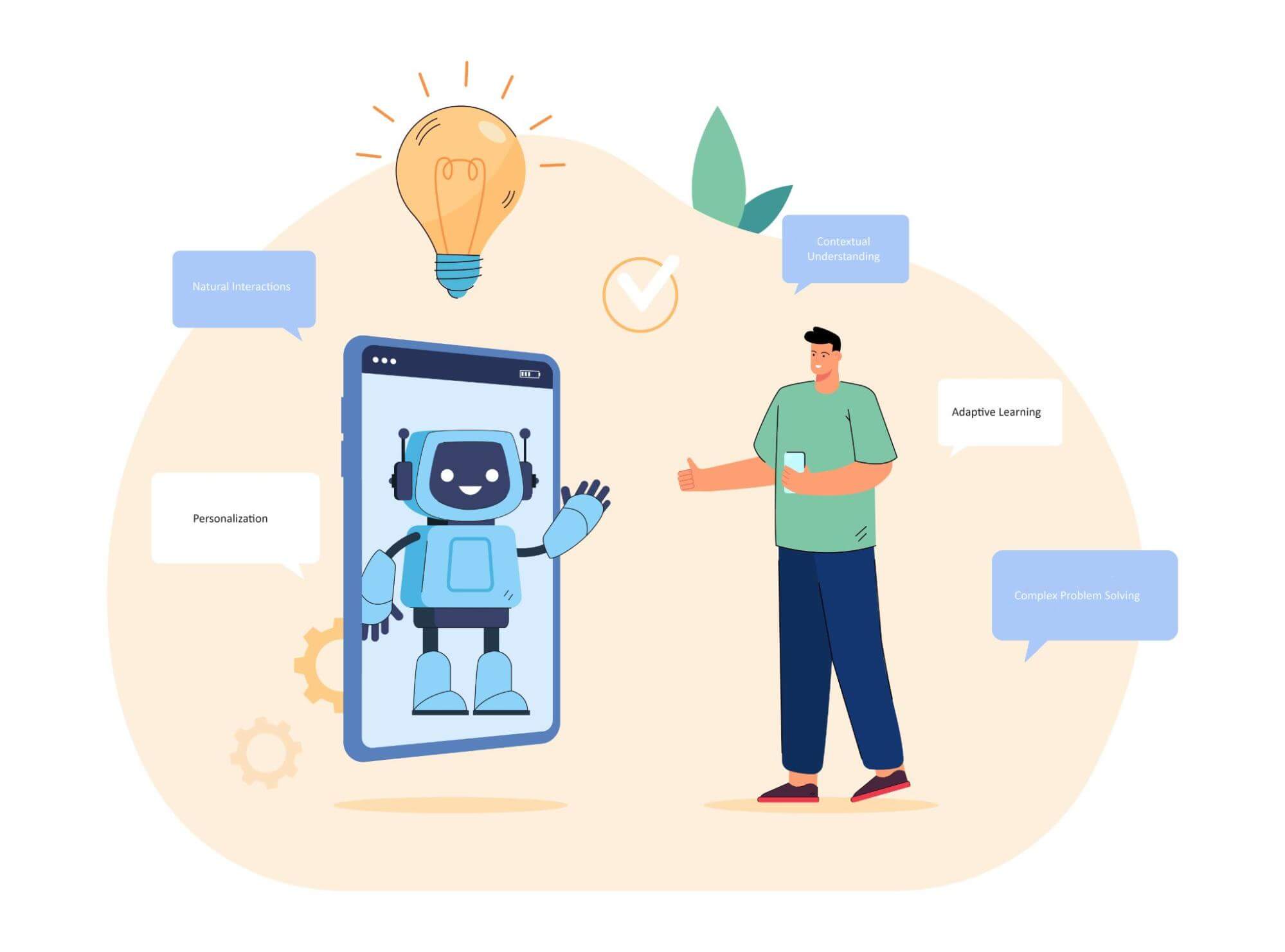
- Natural Interactions: Conversational AI can understand and mimic human conversation, making interactions more natural and engaging.
- Contextual Understanding: These systems can grasp the context of a conversation, allowing for more accurate and relevant responses.
- Personalization: Conversational AI can tailor interactions based on user history and preferences, offering a more personalized experience.
- Adaptive Learning: Through machine learning, conversational AI improves over time, enhancing its ability to serve users effectively.
- Complex Problem Solving: Unlike basic chatbots, conversational AI can handle complex queries and provide solutions beyond predefined scripts.
Limitations and Challenges:
- Complexity in Development: Building a sophisticated conversational AI system requires significant investment in terms of time, resources, and expertise.
- Data Privacy Concerns: As these systems learn from user interactions, they raise concerns about data security and privacy.
- Misinterpretations: Despite advanced capabilities, conversational AI can still misinterpret user intent or provide incorrect information, especially in complex or ambiguous situations.
- Maintenance and Training: These systems require ongoing training and updates to maintain their effectiveness and accuracy.
The choice between implementing a chatbot or conversational AI system depends on the specific needs, resources, and goals of an organization, along with careful consideration of the limitations and challenges associated with these technologies.
Choosing the Right Solution for Your Needs

Choosing between a chatbot and conversational AI involves a nuanced understanding of your business needs, customer expectations, and the level of engagement you wish to offer. Here are factors to consider and how to tailor the solution to meet specific requirements:
- Understanding Your Needs:
- Complexity of Customer Queries: If customer inquiries are generally straightforward and can be resolved with predefined answers, a chatbot may suffice. For more complex, nuanced interactions, conversational AI is better suited.
- Volume and Scalability: Consider the volume of interactions. For high-volume, repetitive tasks, chatbots can efficiently handle the load. Conversational AI systems, while also scalable, are more appropriate for environments where personalized, context-aware responses are needed.
- Customer Experience Goals: If providing a highly personalized and engaging customer experience is a priority, conversational AI offers capabilities that far exceed those of basic chatbots, including understanding user preferences and history.
- Technical Considerations:
- Integration Capabilities: Assess the ease of integrating the solution with your existing systems. Conversational AI may require more sophisticated integration efforts.
- Maintenance and Upkeep: Consider the resources available for ongoing training and maintenance. Conversational AI systems require continuous updates to improve their learning and adapt to new information.
- Data Privacy and Security: Ensure that the chosen solution complies with data protection regulations, especially if it will be learning from user interactions and storing personal information.
- Cost Implications:
- Initial Investment: The development cost for conversational AI is typically higher than for a basic chatbot due to its complexity and the technology involved.
- ROI Consideration: Evaluate the potential return on investment. While conversational AI may have a higher upfront cost, its ability to provide a superior customer experience and handle complex interactions can lead to greater customer satisfaction and retention.
- Future-Proofing:
- Adaptability: Consider how well the solution can adapt to future needs. Conversational AI, with its learning capabilities, may offer a more future-proof solution.
- Innovation and Updates: The ability to incorporate new technologies and updates is crucial. Conversational AI platforms are often at the forefront of leveraging advancements in AI and machine learning.
The decision between a chatbot and conversational AI should be guided by a clear understanding of your business objectives, customer needs, and the level of engagement you aim to achieve. By carefully considering these factors, you can select a solution that not only meets your current requirements but also positions you well for future growth.
Conclusion
Whether it's the simplicity and efficiency of chatbots for straightforward tasks or the sophisticated, nuanced interactions enabled by conversational AI, understanding and selecting the right solution is crucial. This decision not only impacts immediate customer satisfaction and operational efficiency but also positions businesses for future innovation and growth. Whether you're a small business looking to automate customer service or a large corporation aiming to revolutionize user experience, the choice between chatbots and conversational AI hinges on your specific needs, goals, and the value you wish to deliver to your customers. As technology continues to evolve, staying informed and adaptable will be key to leveraging these tools effectively, ensuring they not only meet current demands but also anticipate future trends and opportunities.
